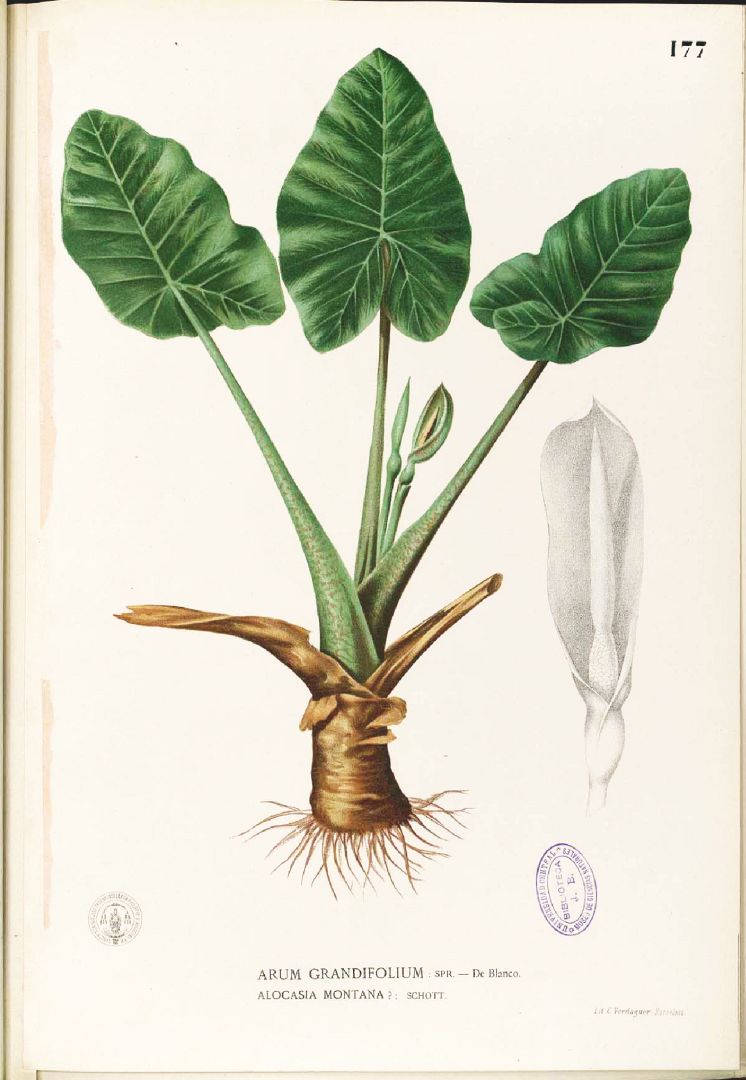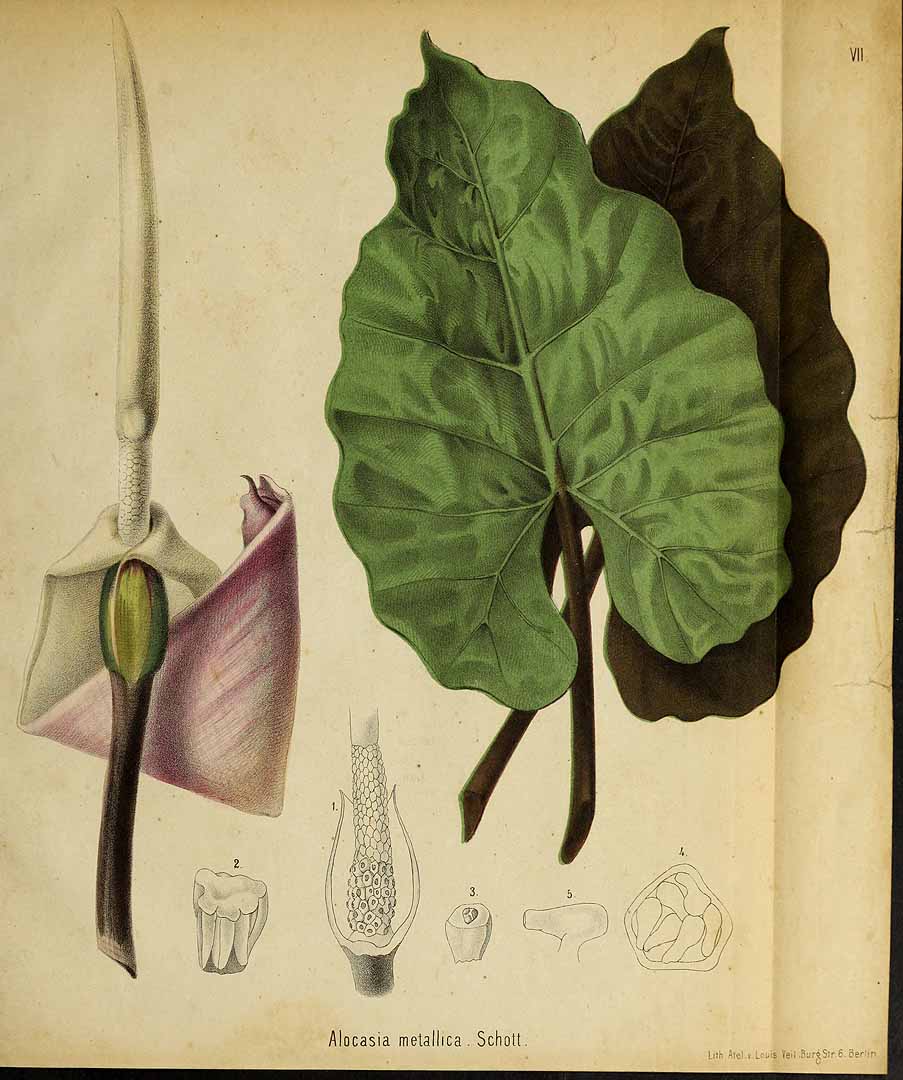! Nouveau site ici !
Vita > Plantae > Magnoliophyta > Liliopsida > Arales >
Araceae > Alocasia
Alocasia macrorrhizos
(Oreille d'éléphant géante)

 | *** - *
| *** - *
Vita > Plantae > Magnoliophyta > Liliopsida > Arales >
Araceae > Alocasia
Alocasia macrorrhizos
(Oreille d'éléphant géante)

0 pour les parties aériennes et -3/-4 (durant une courte période) pour les racines
Une très grande herbe. Une plante de la famille taro. Il a un tronc robuste et dressé atteignant 4 m de haut. Cela a des feuilles verticales en forme de flèche. Les feuilles ont des lobes ronds en bas. Les f... (traduction automatique)
→suite
⬀
Le  donne accès au menu
donne accès au menu (c'est votre point de repère) 😊 ;
En dessous vous avez la classification, à partir de la vie (Vita, premier rang) jusqu'à la classe au dessus de la plante, dont vous trouvez ensuite le nom scientifique/botanique (latin) puis le nom commun (français), le cas échéant ;
C'est aussi un lien vers la fiche complète (tout comme la ✖, en bas à droite, et le +, en dessous de la description) ;
Vient alors l'illustration (ou ce qui la remplace, en attendant), la comestibilité :
Et en bas
⬂





